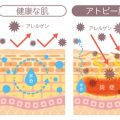Introduction to Skincare: Medical-Grade vs High Street
The British skincare market is more dynamic than ever, with a growing number of consumers becoming increasingly savvy about the ingredients and efficacy of their daily products. In this context, the distinction between medical-grade skincare and high street offerings has become a focal point of discussion among UK beauty enthusiasts. While both categories claim to deliver visible results, understanding their key differences is crucial for those striving to make informed decisions about their skin health. This debate matters not just from an efficacy standpoint, but also in terms of safety, regulatory standards, and long-term value for consumers across the UK. As demand for scientifically-backed solutions rises, it’s essential to explore what truly sets these two product types apart, and how British shoppers can navigate the crowded shelves with confidence.
Ingredients and Formulation Standards
When it comes to skincare, British consumers are increasingly discerning about what goes into their products. The distinction between medical-grade skincare and high street options is most pronounced in the ingredients used, their concentrations, and the regulatory standards that govern them. Understanding these differences can help consumers make informed decisions aligned with their skincare goals.
Active Ingredient Concentrations
Medical-grade skincare products typically boast higher concentrations of active ingredients such as retinoids, peptides, or vitamin C. These potent formulations are designed to penetrate deeper layers of the skin, delivering clinically significant results under professional supervision. In contrast, high street products often contain lower levels of these actives, prioritising broad appeal and reduced risk of irritation for the general public.
| Product Type | Active Ingredient Levels | Purpose |
|---|---|---|
| Medical-Grade | High (clinically tested) | Treatment of specific skin conditions (e.g., pigmentation, ageing) |
| High Street | Low to moderate (cosmetic level) | General maintenance and basic care |
Regulatory Oversight in the UK
The UK maintains stringent cosmetic regulations under frameworks such as the UK Cosmetics Regulation (UKCR), post-Brexit. Medical-grade skincare often falls under both cosmetic and medicinal product regulations, overseen by authorities like the Medicines and Healthcare products Regulatory Agency (MHRA). This dual oversight ensures that claims made by medical-grade brands are scientifically substantiated and that safety profiles meet clinical standards. By contrast, high street products are primarily regulated as cosmetics, with less rigorous requirements concerning efficacy claims or ingredient potency.
Scientific Validation
A critical differentiator is scientific validation. Medical-grade products undergo robust clinical testing, with published studies supporting their efficacy—often a prerequisite for professional endorsement within clinics across the UK. High street brands may reference research but are seldom subjected to independent clinical trials at the same scale or depth.
Summary Table: Formulation Standards Comparison
| Medical-Grade Skincare | High Street Skincare | |
|---|---|---|
| Active Ingredients | Higher concentration; prescription-strength in some cases | Lower concentration; suitable for mass-market use |
| Regulation & Oversight | MHRA & UKCR; dual oversight for safety & efficacy | Mainly UKCR; focus on safety rather than efficacy claims |
| Scientific Backing | Backed by clinical trials and peer-reviewed studies | Mainly in-house research; limited independent validation |
This comprehensive approach to ingredients and formulation underscores why medical-grade skincare commands a premium—and why it may be more suitable for those seeking targeted results under expert guidance within the UK context.
![]()
3. Accessibility and Avenue of Purchase
For British consumers, one of the most distinct differences between medical-grade skincare and high street products lies in how they are accessed and where they can be purchased. Medical-grade skincare is typically available exclusively through registered clinics, dermatologists, or qualified medical professionals. This controlled distribution model ensures that the products are recommended based on a thorough skin assessment, often following a personalised consultation. The process not only guarantees product authenticity but also allows for tailored advice, aligning with stringent UK regulations around prescription-strength ingredients.
In contrast, high street skincare products are widely accessible to the general public. They can be found in major British retailers such as Boots, Superdrug, department stores like John Lewis, and even supermarkets. The convenience of browsing shelves and selecting from a broad range of brands without professional guidance makes high street products particularly appealing for everyday shoppers seeking immediate solutions. However, this accessibility often comes at the cost of limited personalisation and lower concentrations of active ingredients due to regulatory restrictions on over-the-counter formulations.
It’s important to highlight that while the avenue of purchase for high street products is straightforward and requires no appointments or specialist input, this ease does not equate to suitability for all skin types or concerns. Conversely, the slightly more complex route to obtain medical-grade skincare – involving professional evaluation – is designed to ensure efficacy and safety for individual needs. For British consumers weighing their options, understanding these access channels is crucial in making an informed choice that aligns with both their lifestyle preferences and long-term skin health goals.
4. Efficacy and Claims: What Can You Really Expect?
When it comes to skincare, British consumers are increasingly discerning about what genuinely works versus what simply sounds appealing. The core difference between medical-grade and high street products lies in the substantiation of their claims and the actual efficacy delivered. Understanding how to critically evaluate these aspects can help UK users make informed choices that maximise both results and value.
Evaluating Clinical Effectiveness
Medical-grade skincare is subject to rigorous clinical testing before reaching the market. These products often contain higher concentrations of active ingredients, with proven outcomes documented through peer-reviewed studies or trials overseen by healthcare professionals. In contrast, high street products—while often effective for general maintenance—typically undergo less stringent testing and may focus more on sensory appeal than measurable results.
| Aspect | Medical-Grade Skincare | High Street Products |
|---|---|---|
| Testing Standards | Clinically trialled, evidence-based | Basic consumer testing, anecdotal evidence |
| Active Ingredient Concentration | High, prescription-level in some cases | Lower, within over-the-counter limits |
| Supervision | Recommended or dispensed by skin professionals | Easily accessible, no professional oversight required |
| Regulatory Oversight (UK) | Subject to MHRA guidelines if classified as a medical device or treatment | Regulated as cosmetics under EU/UK cosmetic regulations |
Marketing Claims vs. Real-World Results
The British skincare market is awash with bold marketing claims—from “miracle” creams to “instant results”. Medical-grade brands are legally bound to support any therapeutic claims with robust data, while high street products often rely on persuasive language, endorsements, or trend-driven buzzwords. This means that while both categories promise visible benefits, only medical-grade options are required to demonstrate statistically significant improvements in controlled settings.
The Value Equation for UK Users
The real value for British consumers lies in aligning expectations with product capabilities. While medical-grade skincare tends to command a higher price point, its demonstrated efficacy can provide superior long-term value for those seeking targeted solutions (such as hyperpigmentation or acne). High street options remain popular for daily maintenance and affordability but may offer subtler improvements over time.
Summary Table: What Delivers True Value?
| User Need | Best Choice | Why? |
|---|---|---|
| Targeted treatment of specific skin conditions (e.g., acne, melasma) | Medical-Grade Skincare | Proven clinical effectiveness; specialist oversight ensures correct usage. |
| General daily skincare and prevention | High Street Products | Affordable; suitable for broad application and routine use. |
| Sensitive skin or risk-averse consumers | High Street Products (hypoallergenic lines) | Milder formulations; lower likelihood of adverse reactions. |
| Long-term investment in skin health and ageing prevention | A blend of both types, guided by a professional consultation when possible. | Tailored regimen maximises benefits while managing cost and accessibility. |
Understanding these distinctions empowers British consumers to cut through marketing hype and choose skincare that aligns with their expectations—balancing efficacy, safety, and value within the unique context of the UK marketplace.
5. Cost, Value, and Consumer Choice in the UK
When comparing medical-grade skincare to high street products, British consumers must navigate a complex landscape of cost considerations and value propositions. Medical-grade products typically command a higher price point, often due to their concentration of active ingredients, clinical backing, and rigorous testing protocols. These costs are justified by claims of superior efficacy and long-term results, which can appeal to those seeking targeted solutions for specific skin concerns such as acne, pigmentation, or premature ageing.
In contrast, high street brands prioritise accessibility and affordability, making them widely available across chemists, supermarkets, and online retailers throughout the UK. Their lower price tags attract a broad demographic but may involve compromises on ingredient potency or scientific validation. Many British consumers weigh these trade-offs against their personal budget constraints and skincare goals.
The value proposition extends beyond price alone. Medical-grade products are often sold through authorised clinics or dermatologists who provide tailored advice—a service that can be invaluable for those with persistent or complex skin issues. Meanwhile, mainstream brands invest heavily in marketing and packaging to enhance perceived value, leveraging celebrity endorsements or trend-driven formulations that resonate with the younger demographic.
Purchasing decisions within Britain’s diverse skincare market are also shaped by cultural attitudes towards health, self-care, and sustainability. Increasingly, eco-conscious consumers scrutinise product sourcing, ethical credentials, and recyclable packaging alongside performance claims. The rise of social media influencers and online reviews further empowers shoppers to make informed choices based on peer experiences rather than solely on brand reputation or price.
Ultimately, the decision between medical-grade and high street skincare is highly individualised for UK consumers. It hinges on a balance of clinical need, disposable income, lifestyle preferences, and trust in professional recommendations versus mass-market convenience. As awareness grows about ingredient transparency and efficacy standards, British buyers are becoming more discerning—seeking optimal value at every price tier in pursuit of healthy, radiant skin.
6. Current Trends and the Future of Skincare in Britain
The British skincare landscape is undergoing significant transformation, driven by a growing awareness of ingredient efficacy, transparency, and the demand for clinically proven results. The distinction between medical-grade skincare and high street products is increasingly coming under the spotlight as consumers seek solutions that go beyond surface-level promises.
Emerging Trends Shaping the Market
One notable trend is the rise of “skintellectualism”—British consumers are becoming more knowledgeable about active ingredients such as retinoids, peptides, and antioxidants. There is a clear shift towards evidence-based formulations, with many individuals now favouring products backed by clinical trials and dermatologist endorsements over traditional high street offerings. This surge in consumer sophistication has encouraged even mainstream retailers to enhance transparency regarding their product claims and sourcing.
Shifting Consumer Preferences
Modern Britons are increasingly prioritising personalised skincare regimens, often blending medical-grade products with select high street favourites to create hybrid routines tailored to their unique skin concerns. Additionally, sustainability and ethical considerations are playing an ever-larger role in purchasing decisions, prompting both medical-grade brands and high street staples to improve on recyclability, cruelty-free testing, and ethical sourcing of ingredients.
The Impact of Medical-Grade Innovation on the UK High Street
The innovation pipeline from medical-grade brands is having a profound effect on the broader market. Advanced delivery systems, higher concentrations of actives, and data-driven diagnostics are filtering down to the high street. This has sparked a new wave of “accessible luxury,” where premium formulations are adapted for mass-market distribution without compromising too much on efficacy. As a result, the boundaries between professional and retail skincare are blurring—consumers can now access previously clinic-exclusive technologies at their local chemist or department store.
Looking ahead, ongoing collaboration between dermatologists, pharmacists, and cosmetic scientists is likely to accelerate this democratisation of advanced skincare. British consumers can expect ever-more sophisticated options both online and on the high street—meaning future routines may become even more results-driven, personalised, and sustainable than ever before.


